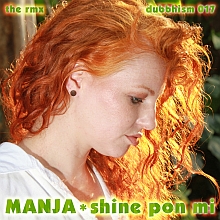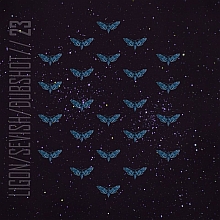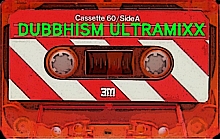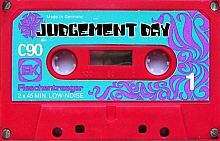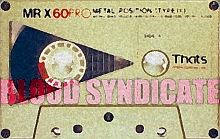
Cryptocurrencies will be an important part of future money. Some people think of Bitcoin as digital gold. But whatever your opinion might be, cryptocurrencies are also interesting from an astrological point of view: lots of timestamps and significator asteroids.
Bitcoin wasn't the first attempt at creating digital money but it's the most successful one so far. While we know a lot about the history of Bitcoin there's also a big mystery: the identity of the creator(s). Their pseudonym is Satoshi Nakamoto, but Satoshi has disappeared. Also, we have lots of historical documents and events with accurate timestamps but no certain location. Therefore, traditional astrological methods that rely on signs, houses and angles (ascendant etc.) are at a disadvantage. Asteroid astrology on the other hand can be accurate enough, using only timestamps.
What is Bitcoin?
Before we start looking at charts, we should know what it is we're looking at. Bitcoin is a new phenomenon when compared to traditional money or gold. It's many things at once, like for example:
- central banks killer;
- political ideology;
- (sub)cultural phenomenon;
- robust technical protocol;
- decentralized electronic network;
- cryptocurrency;
- relatively volatile store of value;
- hedge against inflation;
- etc.

Bitcoin data
The first thing we need for an astrological analysis of the Bitcoin-phenomenon is a handful of important dates. Wikipedia provides a few, and for a deeper dive there are rich sources like The Complete Satoshi which includes timestamped emails, forum posts and so on. Here are some dates from the early days:
- On 18 August 2008, the domain name bitcoin.org was registered.
- On 31 October, a link to the all important paper authored by Satoshi Nakamoto, titled Bitcoin: A Peer-to-Peer Electronic Cash System was posted to a cryptography mailing list.
- On 3 January 2009, at approximately 18:15:05 UTC the bitcoin network came into existence with the mining of the 'genesis block'.
- The first trade took place on the 11th of January at 23:00 UTC.
- On 15 August 2010, a major vulnerability was discovered.
The 3rd of January 2009 is the most important date. This provides the widely used Bitcoin chart. And it's a beast, especially the Mars-Pluto conjunction which is the mark of a determined fighter. Also note Uranus opposite Saturn (innovation vs. conservative power-structures), Venus (money) sextile Pluto (rebirth) and Uranus quintile Mars (powerful iconoclast).
Find the significators
For a solid asteroid-based analysis, the next step would be to find the most important Bitcoin and cryptocurrency-significators. In general, significator asteroids point to specific people, places, subjects, qualities and so on. Most significator asteroids are organized in loosely defined groups that travel along synchronistically coupled trajectories. Groups can be name-based, meaning-based or both.
In practice this means you'll be tracking multiple significators to get a broader picture. This can get complicated as some significators are more important than others. Significators may or may not be in some harmonic relationship like conjunction or opposition. When they are, they usually become more relevant. If one or more important significators are contacting the Sun (1 degree orb) while other planets, dwarfs or significators are also being activated, there's a higher probability that something significant will happen.
Here's an overview of 4 groups of potential Bitcoin significators. As you can see, the (phonetic) structure of the name is relevant.
'Bitcoin' based names
Bitias (5120)
Bittesini (5299)
Bittner (6596)
'Satoshi' based names
Setouchi (3392)
Sats (5300)
Satoru (8485)*
Satotoshio (14499)
Satoshi (14927)
Sathish (33621)*
Satovski (212929)
'Nakamoto' based names
Nakano (3431)*
Nakamura (4219)*
Nakamuraminoru (13605)*
Nakamurahiroshi (14028)
Nakamurayoshi (21036)*
Nakamatsu (27930)
other
Damocleid 2008 SO218 (330759)
Coyne (14429)
Relative importance
Obviously this list is a bit too long. So how do we filter out the most important significators? Experience teaches that:
- the Bitcoin-based names are very important;
- the Damocleid is also very important;
- Coyne is also quite important.
This leaves the 'Satoshi' group and the 'Nakamoto' group. They are not important for the analysis of price action. Having said that, the Satoshi-based names are generally more important than the Nakamoto-based names. That's because 1 satoshi (the unit) equals one hundred millionth of 1 bitcoin (0.00000001 BTC). Nakamoto is more connected to the creator, not the currency. The asteroids marked with * are conjunct planets or nodes in the Bitcoin-chart and are therefore probably more important than the others in their group.
By the way, Bitcoin isn't the only digital currency that has significators. Asteroid Cardano (11421) for example is a significator for the Cardano ecosystem and its ADA currency. But note that there is an important difference between Bitcoin significators and significators for other cryptocurrencies. The Bitcoin significators can also function as significators for digital currencies in general. For example in the case of Cardano, the main Bitcoin significators are just as relevant as its most important 'native' asteroid, the namesake Cardano.
Damocleid 2008 SO218 is also a significator for digital currencies in general. This was discovered by dutch astrologer and asteroid specialist Benjamin Adamah. Coyne is yet another crypto generalist.
Similar names, different meanings
The structural (phonological and morphological) similarities between for example Satoshi, Satoru and Satovski are obvious ~ unless you insist that the Universe doesn't know how to spell. But these similarities can obscure certain nuances. In other words: similar significators may have different meanings. So how can we get a grip on the different meanings of fairly similar significators?
To find out what part or aspect of Bitcoin-as-a-whole is signified by, say, Bittesini, two sources of information are very helpful:
1. The discovery chart of the asteroid;
2. The position of the asteroid in the Bitcoin chart.
If the information from both sources can be matched in a meaningful way, and if the established nuances actually 'work' in practice in a variety of charts, your significator game is improving significantly.
Differences between the bitcoin-based significators
As an example, here's how we can differentiate between Bitias, Bittesini and Bittner based on an analysis of their discovery charts. (This kind of analysis can be done relatively easy using Benjamin Adamah's 'Asteroïden Gids'.)
Bitias, 13-10-1988, Palomar Observatory
The Bitias discovery chart is dominated by a Saturn-Uranus-Galactic Center conjunction. The position of asteroid Bitias in its discovery chart points to an extreme kind of purging (conjunct Plutino 2002 VE95, Plutino 1996 TQ 66 and SDO 1995 TL8). There's a deep impulse or desire to overthrow an old system but the process, or struggle, doesn't look pretty and it's not easy.
Fundamental characteristic: painful struggle
Bittesini, 8-6-1969, Leoncito Astronomical Complex
The most remarkable thing about the Bittesini discovery chart is the fact that Bittesini itself is conjunct Mars. Bittner is also very close to this conjunction, within 1,5 degree, and the explosive asteroid Bomben makes this conjunction even louder. Jupiter is conjunct the South Node, Bitias is quintile the Damocleid. Let's just say that this chart is extremely agressive from the Bitcoin-perspective.
Fundamental characteristic: explosive, agressive
Bittner, 15-11-1987, Klementinum Observatory
Bittner's discovery chart is less agressive, although asteroid Vipera (killer instinct) is conjunct Bittner. Centaur 2007 DU112 is also conjunct Bittner and according to Benjamin Adamah this points to convergence, synergy, a (slow and steady) overwhelming climax, or being at the right place at the right time.
Fundamental characteristic: "I love it when a plan comes together" (Hannibal Smith)

A relatively easy and powerful way to get a grip on significators in any chart is to focus on the degree they're in, and list all other important asteroids within 1 degree orb. The next step could be to look at the first five harmonics, up to quintiles, but keep in mind that conjunctions are often the most important. Let's look at the conjunctions for Bitias, Bittesini and Bittner in the Bitcoin chart.
Bitias
The asteroids in Bitias' region are polarized, which is fitting if we think of the difficult struggle in the discovery chart. On the one hand we have Virtus (heroic courage) and Reasoner (clear thought). On the other hand we have Neptune Resonant 2002 GX32 which, according to Benjamin Adamah points to hybris, failure and greed.
Bittesini
By far the most important asteroid in Bittesini's region is Nessus. This infamous asteroid is relatively powerful, and related to problems with borders and invasions in a very broad sense. Add this to the agressive discovery-chart and you've got enough metaphysical firepower to scare the petrodollar. Heisenberg is also interesting, pointing to both subjectivity and uncertainty (the uncertainty principle and also FUD). Asteroid Lugh is also important. According to Benjamin Adamah it points to harvesting. Fun facts: asteroids Keynes and Adam Smith, named after the economists are joining Bittesini. Keynesian theory is used to rationalize inflation, so that makes sense. Adam Smith is sometimes referred to as the Father of Capitalism because of his naive ideas about the 'free market'. Hmmm...
Bittner
Bittner is again quite polarized, combining Chaos, Fruits and two power-hungry Plutino's. 1998 WW24 points to striving for autonomy and breaking through resistance, while encountering problems because of rejection. 1998 WU31 is very similar to 1998 WW24, but with a stronger accent on the will to power and manipulation, again according to Benjamin Adamah. Another fun fact: asteroid Weimar is also present, pointing to the Weimar Republic, which is virtually synonymous with hyperinflation. Yep, asteroid astrology is fun!
A closer look at two charts
Now that we have a basic idea of the differences between Bitias, Bittesini and Bittner, we can start to analyse Bitcoin-related charts with more precision. Let's take a look at two charts. One is about vulnerability, the other about price action.
The integer overflow incident
Bitcoin had already seen a few major bugs (or vulnerabilities) prior to the integer overflow bug that led to 184 billion BTC being created out of thin air on the 15th of August 2010. On that day Jupiter was conjunct Uranus and Neptune was conjunct Chiron. Vulnerability also points to asteroid Achilles (quintile Jupiter/Uranus) and the asteroids that are conjunct Achilles are indeed telling a part of this story.
Bittner, Bittesini and Achilles have asteroid conjunctions that point to aspects of blockchain technology. Mining hashrate is a key security metric. Asteroids Haswell and Hasslacher point to this. Kettering simply points to blockchain technology (Kette is a German word meaning chain).
Bitias is conjunct Schubart. This asteroid is a difficult, anarchistic energy: impulsive actions, revenge, or a fuck the system-philosophy. Asteroid NOT neutralizes this energy. Swindle is also very close.
Bittesini faces Damocleid 2002 XU93. Benjamin Adamah suggests the name Serpent Eye for this one. It points to conflict, and 'seeing through the mistakes made by the creator'.
Bittner is conjunct Mars: the strategic significator is under attack. There's an erotic touch here with Eros (passion) and Sirene (attraction, getting into trouble) and the orgasmic asteroid Mera (overflow) points to the technicalities of the exploit. Toutatis is about getting oneself into trouble, ruining things and a brutal attitude.
Also, asteroid Hack is trine Flood, Siwa (another orgasmic asteroid) and Bratfest (youngsters playing around and getting into trouble).
For this chart, knowing the differences between Bitias, Bittesini and Bittner actually helps. If we say that the Mars-Bitias conjunction is the most important one, Nakamoto's strategy for the survival of the bitcoin protocol gets a stress test (Mars) on the 15th of August 2010.

A big drop in price
Now let's look at an example about price action. When it comes to price, it's relatively easy to predict volatility using asteroids, but the direction of the price can be a challenge. Knowing the differences between Bitias, Bittesini and Bittner can help you a little bit.
On the 23rd of May 2021 the price of bitcoin dropped significantly. Bittesini, the agressive one, was conjunct Sun, together with Etheridgea which is one of the two main significators for Ethereum. (Ethel is the other one.) At first glance Bittesini conjunct Sun might look like a good day for bitcoin. Aggressive price action doesn't sound bad. But we know that Bitias is about struggle and unfortunately Bitias is opposite Sun and Bittesini. That changes the picture. On the 23rd of May, the price of bitcoin is struggling against itself so to speak. Meanwhile Ethel is opposite Pluto, which is less important but also a repetition of the same theme. Damocles conjunct Jupiter and Venus square Coyne and Rockefellia suddenly seem quite unattractive. But the most important clue is Bitias opposite Bittesini.








